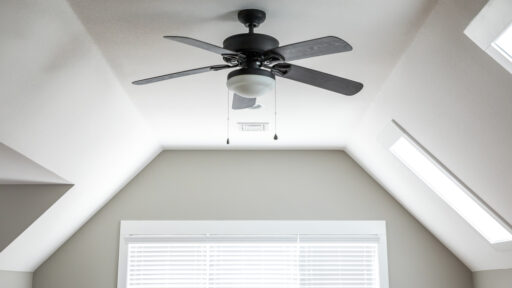Have you ever stepped into your basement and noticed a damp smell that makes the air feel heavy? That smell is often a sign that mold is starting to form, and once it takes hold, it can spread quickly. Mold not only damages walls, floors, and stored items, but it can also affect your health by making the air less safe to breathe.
The good news is that there are practical ways to stop it before it grows. In this blog, you will learn the top solutions for preventing mold growth in basements and how to keep your home safe and healthy. Let’s dive in!
Understanding Why Mold Grows in Basements
Mold thrives in places that are damp, dark, and poorly ventilated. Basements often provide all three conditions, which makes them one of the most common areas in a home where mold can appear. Moisture is usually the biggest cause.
It can come from leaks in walls, cracks in the foundation, or even high humidity in the air. Without enough light and airflow, the dampness lingers, giving mold the perfect space to grow. Knowing what causes mold is the first step in controlling it.
Improving Basement Ventilation
Airflow is one of the best defenses against mold. When air moves freely through a space, it carries moisture away and prevents damp spots from forming.
Many basements are sealed tightly, which traps humidity and makes the air feel stale. To fix this, you can open windows when the weather is dry, or use fans to keep air circulating.
Another effective solution is to install a dehumidifier. This machine pulls extra moisture from the air and keeps humidity at a safe level.
A well-ventilated basement feels fresh, smells clean, and creates an environment where mold cannot easily grow. Making ventilation a priority will go a long way in protecting your home.
Controlling Basement Humidity
High humidity is a major reason why mold develops in basements. When the air is full of moisture, it settles on walls, floors, and stored items. Over time, this creates damp areas that attract mold.
To prevent this, it helps to monitor humidity levels with a simple tool called a hygrometer. If the reading shows more than 60 percent, the risk of mold growth is high.
Keeping humidity lower than 50 percent is a good goal. A dehumidifier is one option, but proper insulation also makes a big difference.
Insulating basement walls and pipes reduces condensation, which lowers moisture in the air. By managing humidity, you cut off one of mold’s main
sources of survival.
Fixing Water Leaks and Cracks
Even the smallest water leak can become a big problem if ignored. Leaks around windows, pipes, or cracks in the foundation let water into the basement, creating damp spots where mold spreads.
When rainwater or groundwater seeps in, the situation can get worse quickly. That is why it is important to inspect your basement often and repair any problem right away.
Sealing cracks with the right materials and fixing broken pipes will protect the space from future leaks. Keeping gutters and downspouts clear also helps, since clogged drains can cause water to collect around the house and seep inside. Every repair makes your basement safer and less welcoming to mold.
The Role of Basement Waterproofing
For homes with serious moisture problems, basement waterproofing can be a long-term solution. This process helps keep water out of the basement by sealing walls, strengthening foundations, or adding drainage systems that move water away from the house. When done correctly, it protects against leaks that would otherwise create mold problems.
While it may seem like a big project, waterproofing is worth considering if your basement often floods or feels constantly damp. Once moisture is under control, the space stays cleaner, healthier, and safer to use for storage or living. Preventing mold becomes much easier when water is stopped at the source.
Keeping the Basement Clean and Dry
Regular cleaning plays a big role in preventing mold. Dust and dirt may not seem harmful, but when combined with moisture, they give mold a place to grow.
By vacuuming, wiping surfaces, and removing clutter, you keep the basement less attractive to mold. Stored items should be kept off the floor and placed in plastic bins instead of cardboard boxes, since cardboard soaks up moisture.
If a spill or leak does happen, drying it right away is important. Even a small puddle left for too long can become a breeding ground for mold. Staying on top of cleaning and drying makes the basement safer and helps you avoid bigger problems later.
Improving Indoor Air Quality
Mold does more than harm walls and belongings. It also affects the air that you breathe. Poor basement air quality often spreads to the rest of the home, making it unhealthy for everyone.
Installing air purifiers with HEPA filters can reduce mold spores floating in the air. These machines trap tiny particles that are too small to see, leaving the air cleaner and safer.
Good air quality also depends on regular maintenance. Changing filters in heating and cooling systems and keeping vents clear of dust help air move better throughout the home. Fresh, clean air not only stops mold from spreading but also makes the living space more comfortable.
Building Healthy Habits for Mold Prevention
Preventing mold in basements is not just about one-time fixes. It requires habits that keep moisture and dirt under control all year round. Checking humidity levels, running dehumidifiers, repairing leaks quickly, and cleaning often are all part of a routine that protects your home.
Once these habits become regular, they save time and money by preventing major damage. More importantly, they keep your home safe for your family. Mold may be stubborn, but with the right actions and consistent care, it can be kept out of your basement.
Protect Your Home At All Cost Using This Guide
Mold in basements may seem like an endless problem, but with the right solutions, it is possible to control and prevent it. By improving airflow, reducing humidity, fixing leaks, and keeping the space clean, you cut off mold’s main sources of survival.
Adding expert steps like basement waterproofing provides even stronger protection. Taking these actions makes your home healthier and safer, giving you peace of mind. Protect your home from mold with expert basement solutions that control moisture, improve air quality, and keep your living space safe and healthy.
Did you like this guide? Great! Browse our website for more helpful topics!








